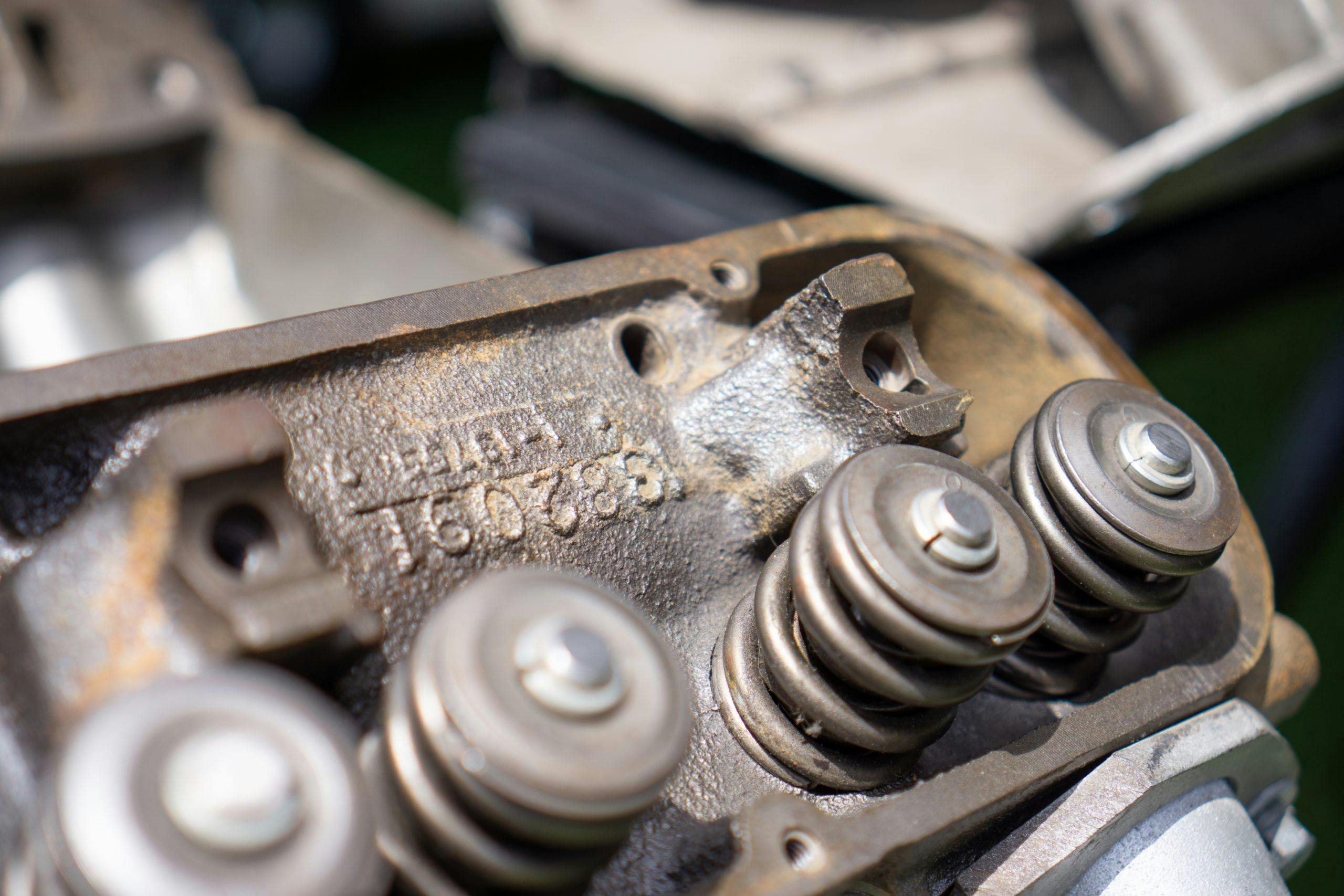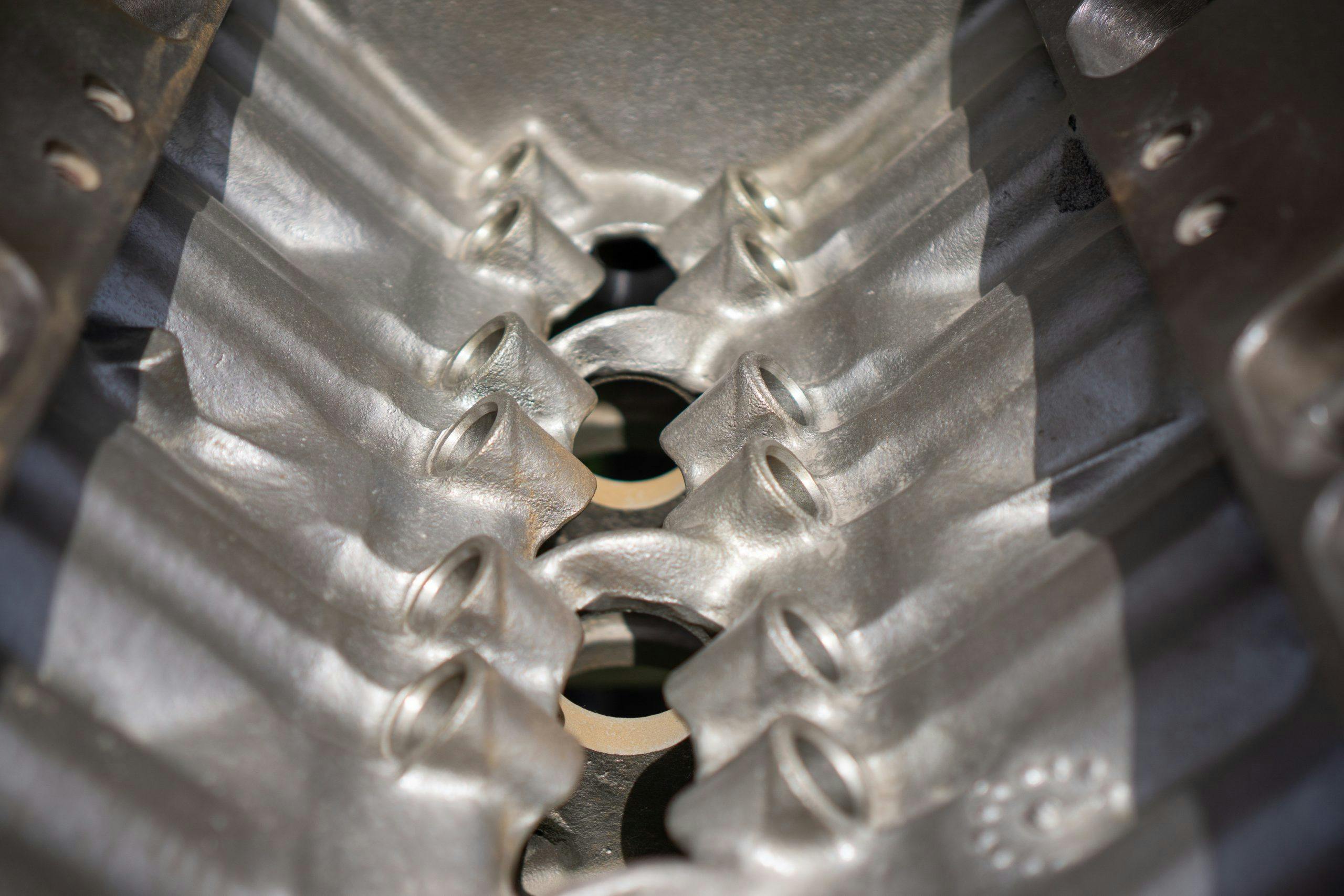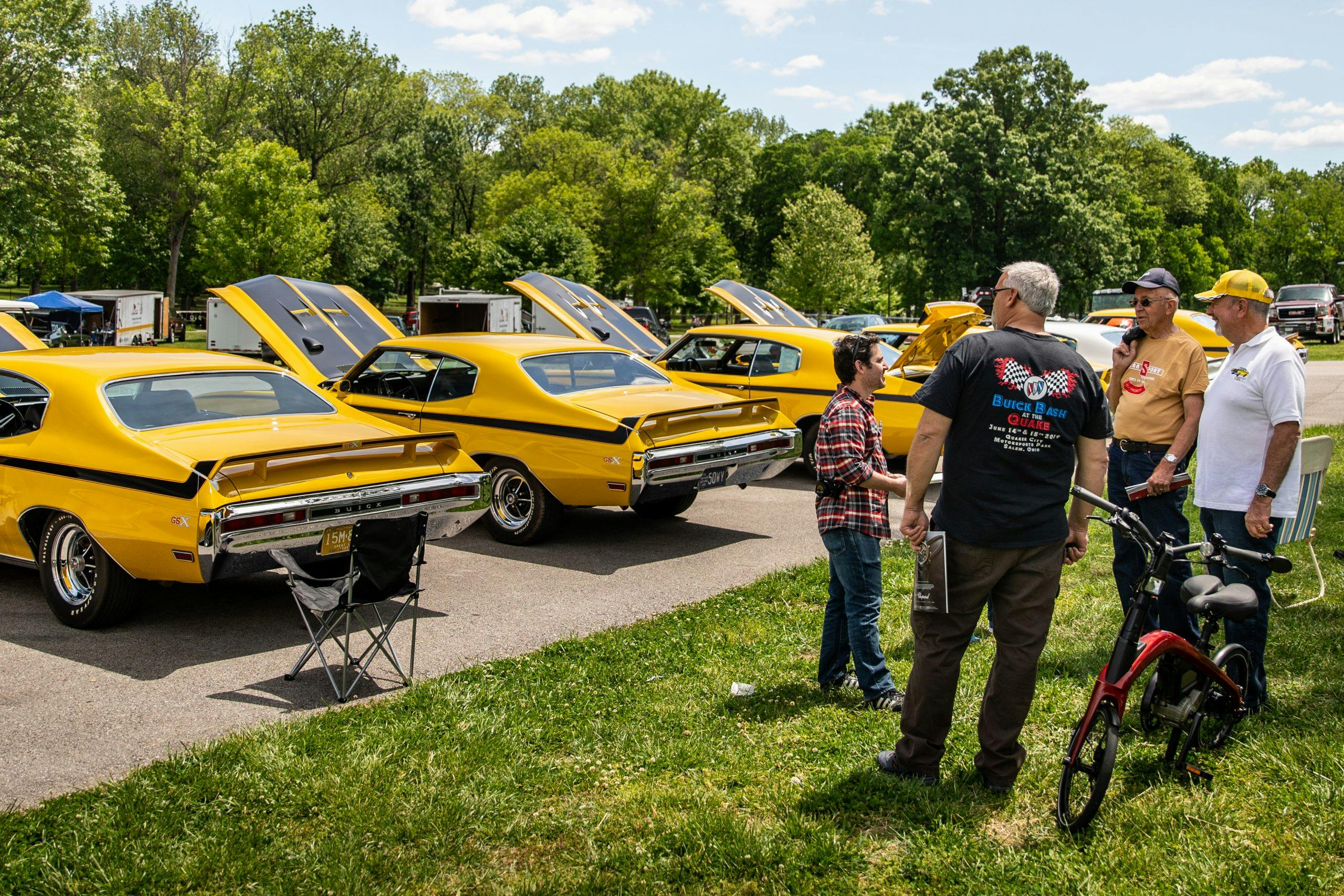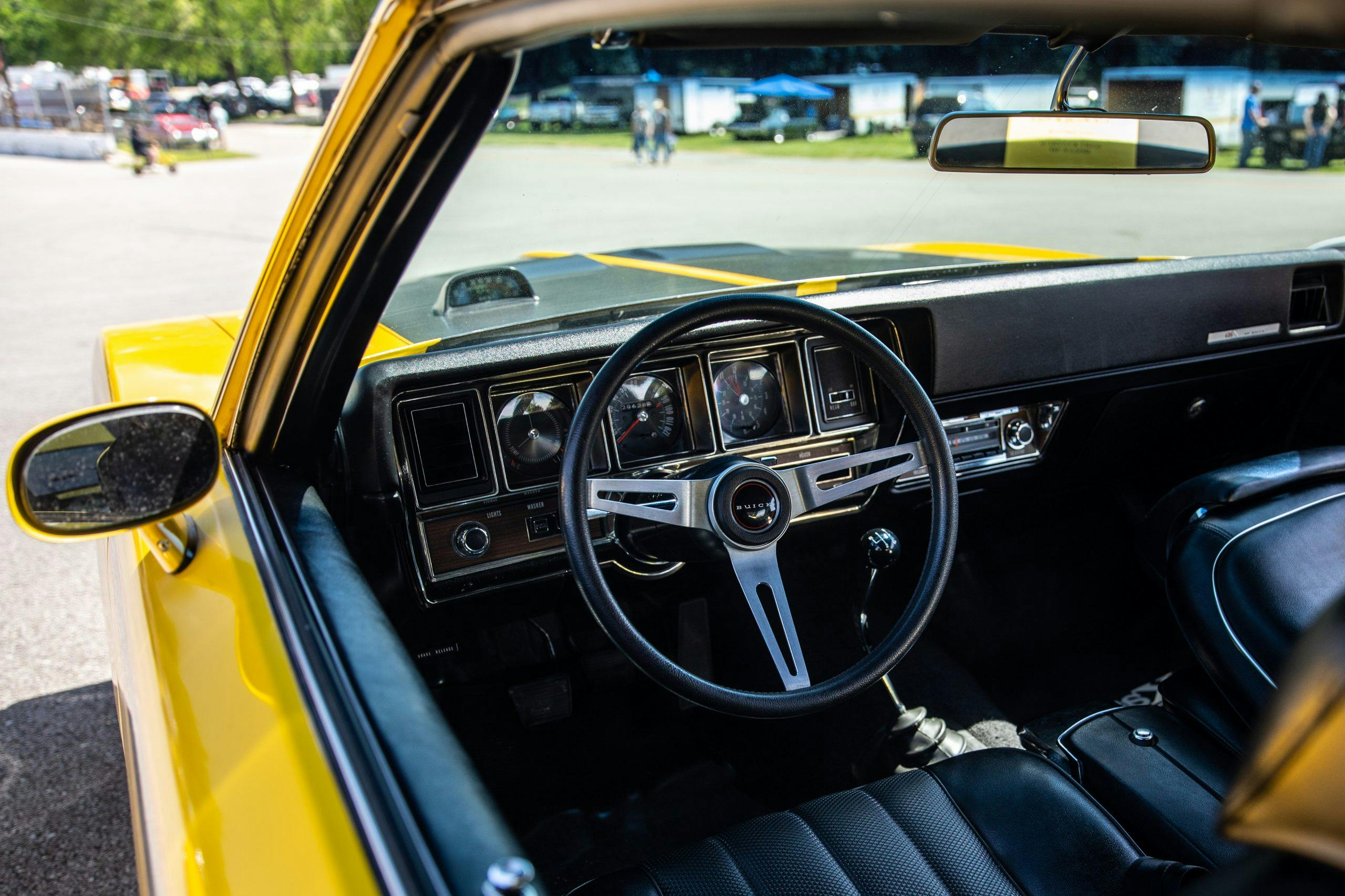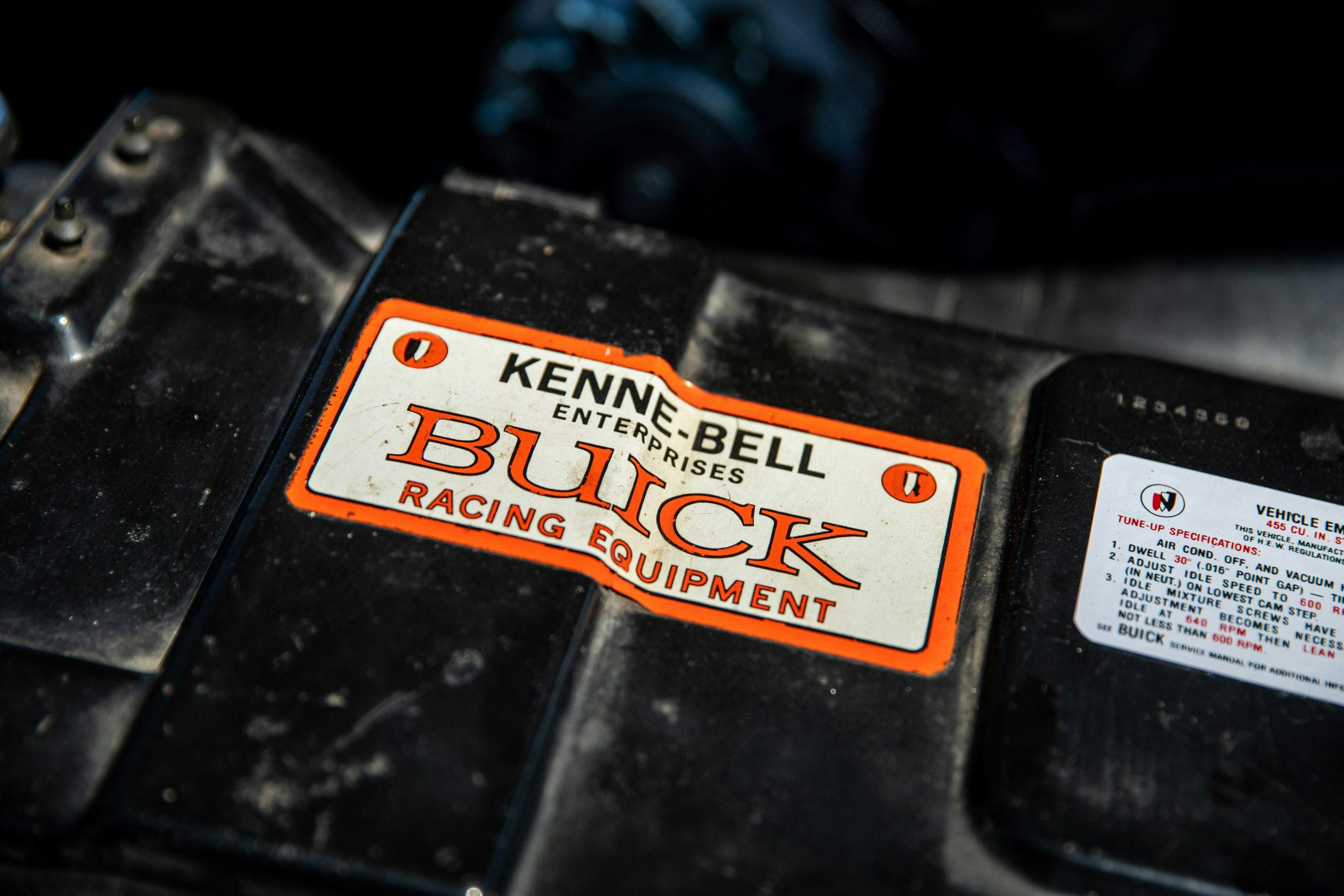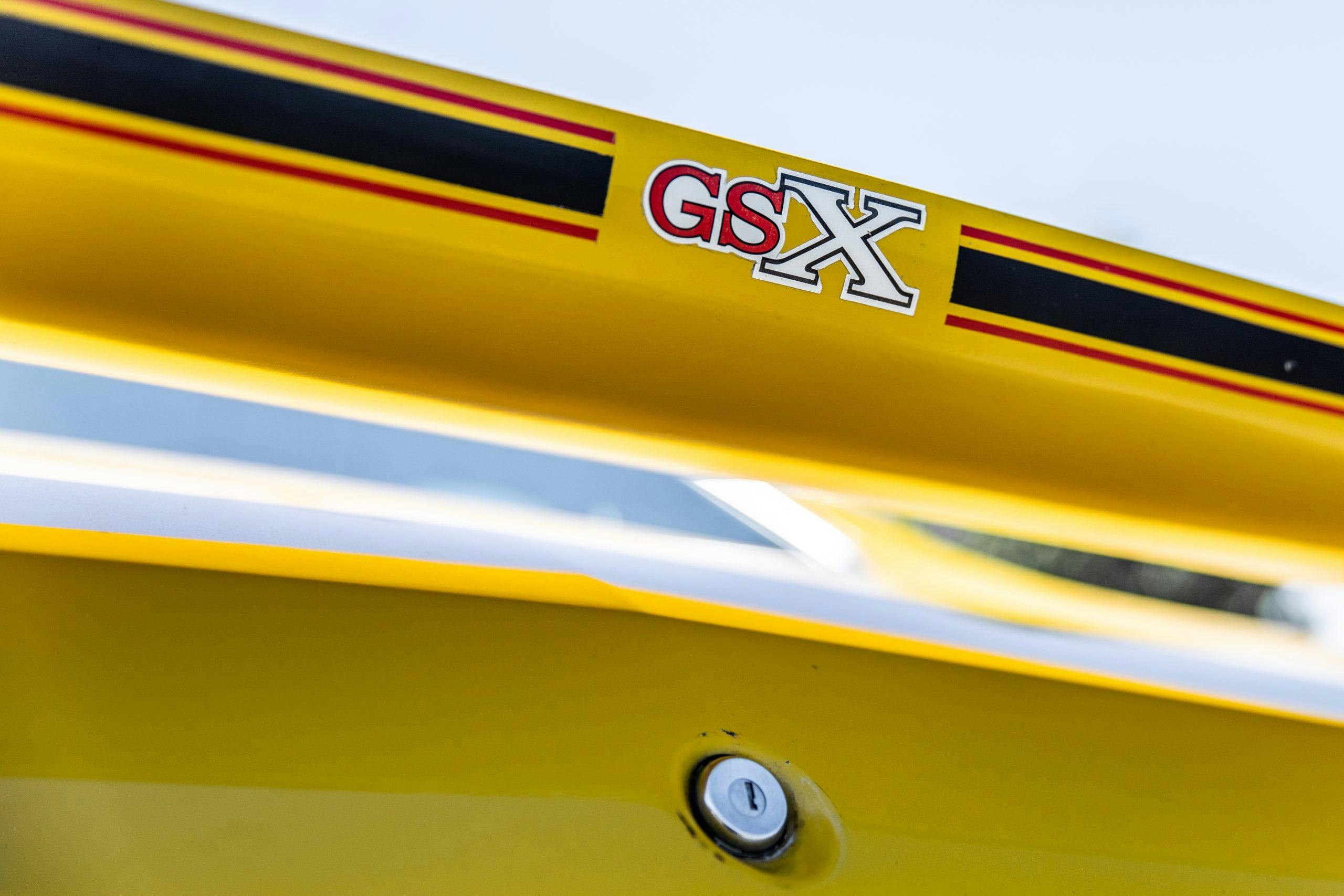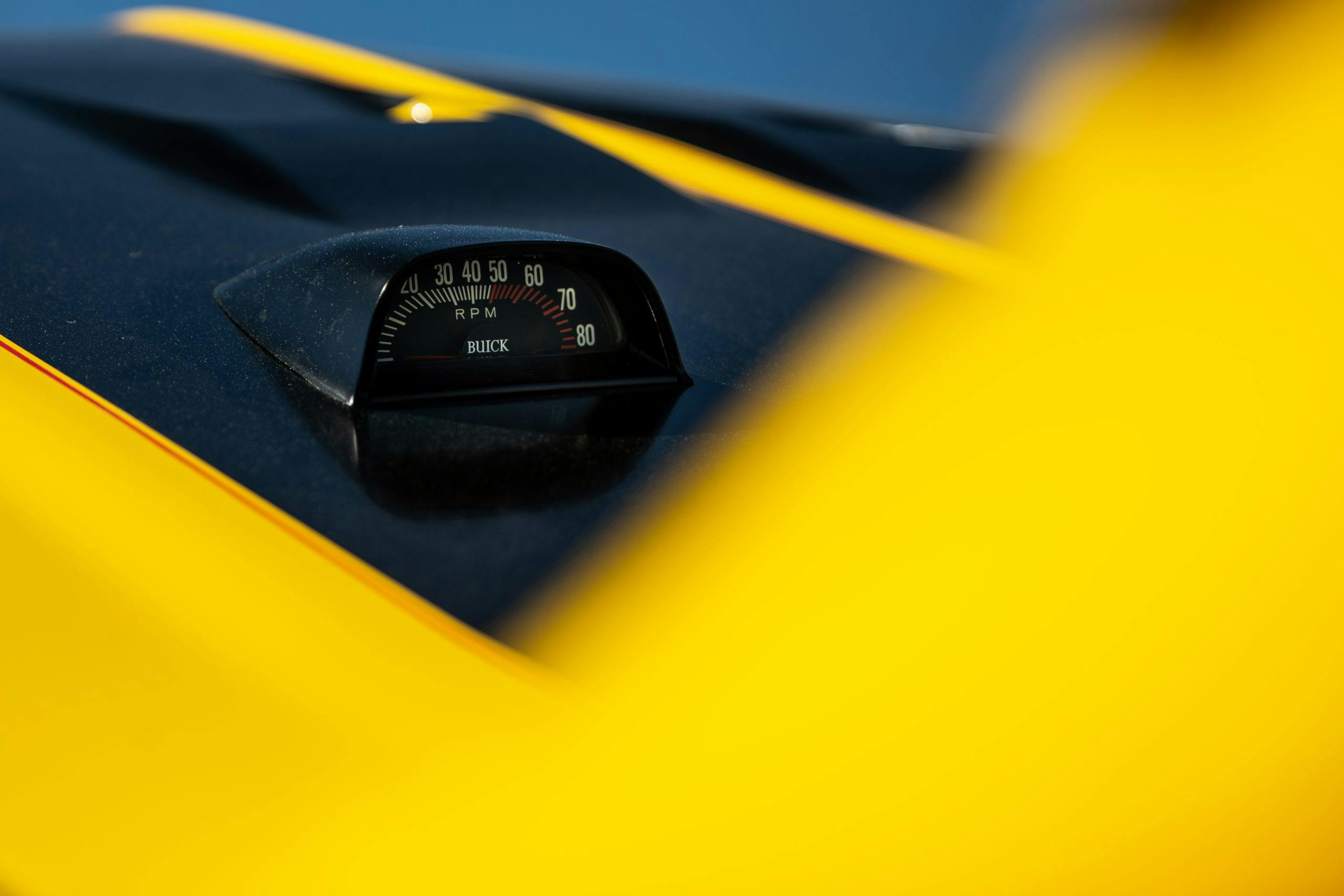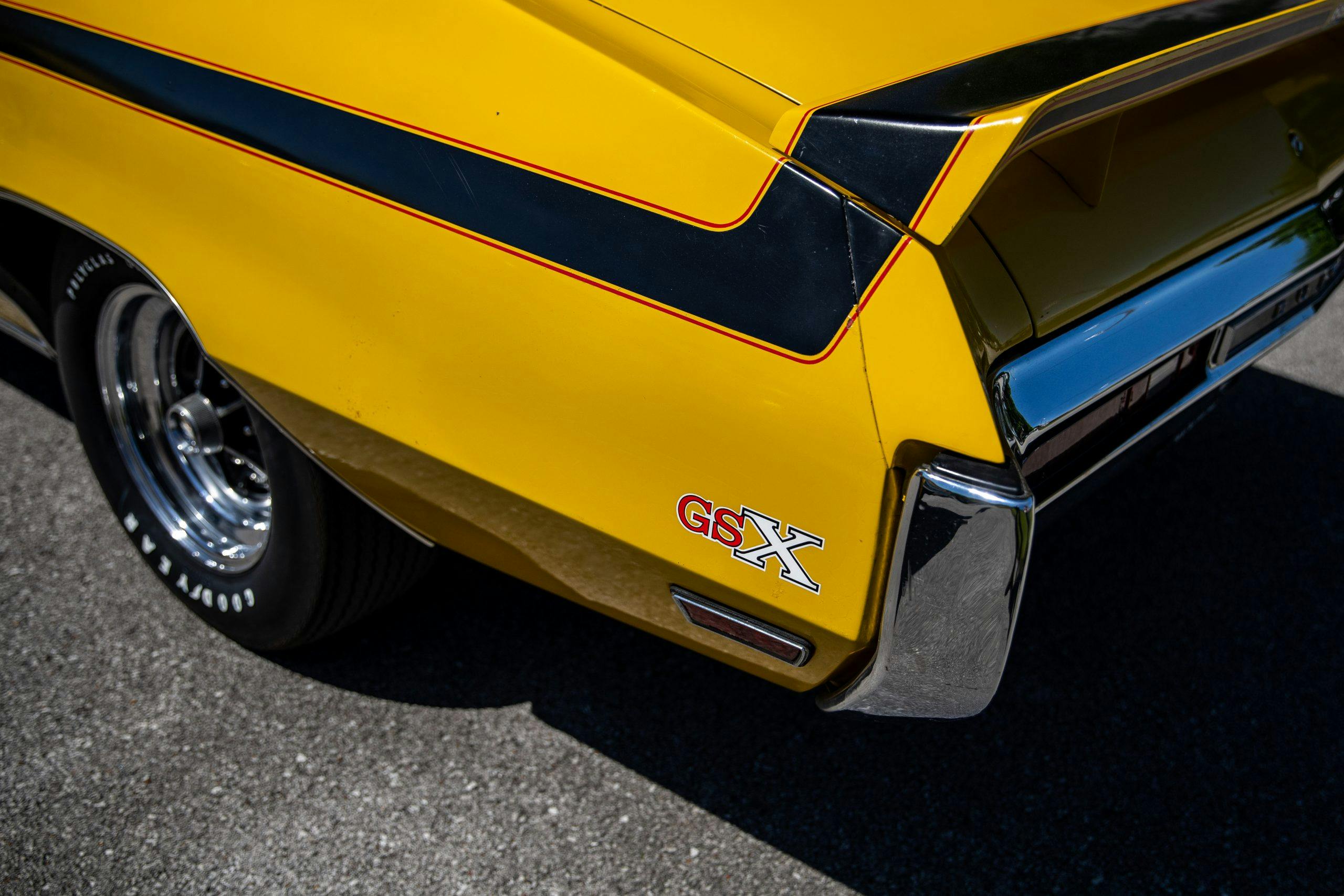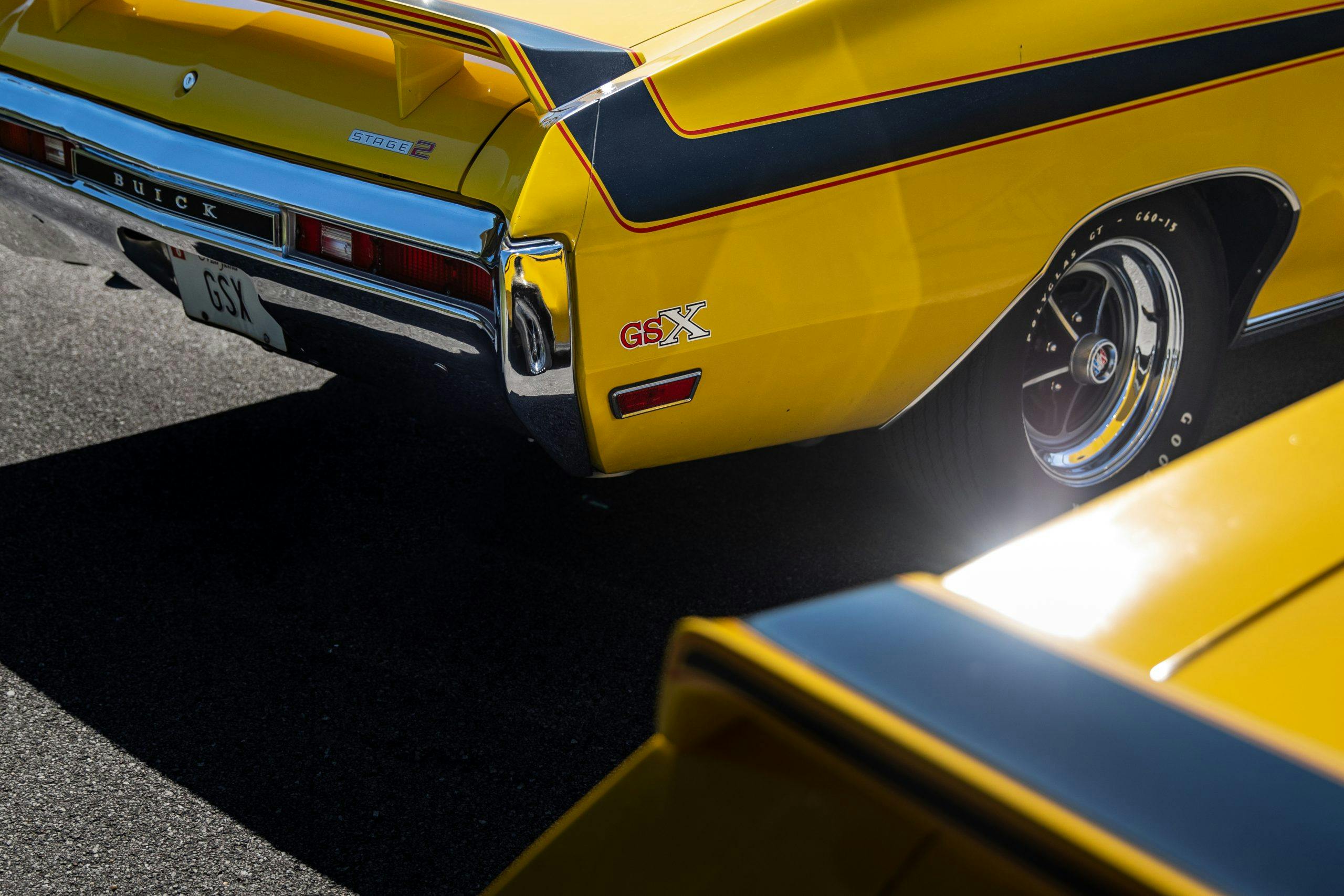50 years since the GSX, Buick engineers flock to GS Nationals to stoke the flame
Loyal readers (particularly Buick buffs) have hopefully been following our coverage of the 2021 Buick GS Nationals and the 50th anniversary GSX Reunion. While our first story was all about embedding with the enthusiast citizenry on the drag strip, in the paddock, and around the car show, our second episode was a profile of one particularly clean GSX. The owner of that car, Larry Lyons, is one of several former GM engineers who worked for Buick at the time of the famous muscle car and made it to Bowling Green for the festivities this year. That several GM employees who directly contributed to brand’s performance push during the ’60s and ’70s made the trip to Kentucky for this momentous gathering speaks to their enduring pride and enthusiasm. And the Buick community is that much richer for their continued involvement.
A hopped-up, loaded version of the GS 455 for 1970, the GSX was a 350-hp, 510 lb-ft monster. The tough appearance—black body stripes with red trim, standard spoiler, hood-mounted tach—was anything but skin deep. In addition to the big V-8, the GSX boasted a litany of standard performance and handling kit: heavy-duty cooling, power front disc brakes, heavy-duty shocks and springs, front and rear antiroll bars, quicker-ratio steering, and a limited-slip differential. Just 678 were built, 187 in Apollo White and the large remainder in Saturn Yellow. Most buyers opted for the Stage 1 engine upgrade.

The primary target for the GSX, naturally, was the Hemi Cuda. But it wasn’t on the drag strip where Buick engineers were determined to prove the Stage 1’s mettle. “Fast for the street,” says Buick engine development engineer Denny Manner. “That was our goal.” Manner is curt and matter-of-fact, staring down at me through tinted glasses and crossed arms. “Buicks were heavy, loaded with power everything. That’s how people bought ’em. Low-end torque was key because that’s how people perceive performance.”
However it built up Buick’s reputation on the street, performance wasn’t the brand’s moneymaker when Manner started tinkering with GM big-blocks in the mid-1960s. High-option, expensive Rivieras and Electras were the cash cows. “I was a gearhead and racer,” explains Manner, “so my interest was elsewhere. I evolved into a performance engineer and advocated for that, which required selling the ideas to management.”
Although the GSX was approved for production, practically the only advertising fanfare it got was a pamphlet—the car wasn’t even included in the 1970 standard catalogue. We asked Ron Frakes, Buick aerodynamics engineer and the project manager in charge of putting the GSX into production, what the marketing department’s reaction was to the car. “The attitude from Sales was ‘who cares?’ They didn’t sell!” he says with a laugh.

Despite the quiet production numbers, the 1970 GSX Stage 1 was in every respect a sonic boom across the muscle car world. Lyons, an engineer who started at GM in 1965 as a co-op student through GMI (now Kettering University), who worked with Manner at Buick and later became chief engineer at Oldsmobile, remembers it well. “Friendly competition in those days is what made GM great,” he says, calm and soft-spoken. “Within the Sloan pecking order, the Stage 1 Buick was the fastest street car out there, and that made plenty of people nervous.”
Unfortunately, circumstances outside the Buick engineering team’s control doused the GSX’s performance flame before it could really catch. The order came down to start lowering compression beginning with the 1971 model year, sapping power to satisfy emissions concerns. It marked the beginning of the end of American muscle era, a process that swiftly reached a sad, dramatic conclusion with the 1973 oil embargo.
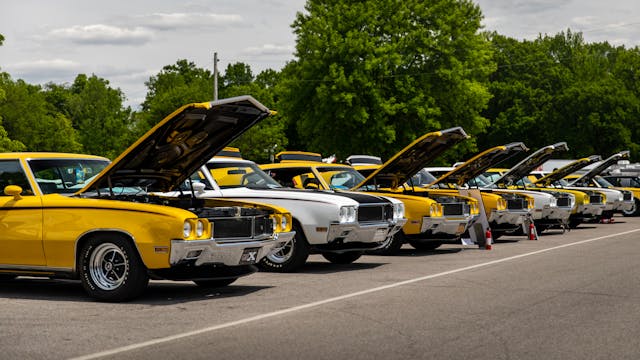
Manner’s work didn’t just benefit street car performance. As a means of testing some of experimental components, he would occasionally send them to Buick racers through dealerships. Kenne-Bell, a legendary race team affiliated with California’s Reynolds Buick, equipped its Stage 1 drag car with Buick’s fearsome Stage 2 package to prove its capabilities.
Joining us at GS Nationals 2021 was a very special guest—an experimental set of Stage 2 “tunnel port” 455 four-bolt main block engine components originally developed in 1968–69 by Manner and shipped to Bill Price Buick in Burlington, North Carolina. In 1970, when mandates to lower octane and decrease compression effectively killed Buick’s support of these racing efforts, Manner sent the complete engine to Burlington intended for Pro Stock racer Tony Branson, who ultimately ran a 9.17 @ 153 mph with it packed inside his 1969 GS drag car. According to Buick builder Duane Heckman’s detailed documentation, the parts included:
- a strengthened experimental 455 cubic-inch four-bolt main block
- a pair of experimental cylinder heads with Stage 2 exhaust ports and enlarged “tunnel port” intake ports
- a Stage 2 camshaft
- hollow stem Stage 1 exhaust valves
- experimental Stage 1 intake valves
- a full-length windage tray
Later, upon receipt, Branson created his own deep oil pan from a 455, fabricated an aluminum tunnel-port intake manifold, and topped it off with several other modifications along with dual Holley double-pumper carbs.
After racer Branson switched to Chrysler support 1971, the car was no longer in use, so he loaned it out to some family friends—never to see it again. Over the years the engine made it to a North Carolina race driver and mechanic by the name of Herb Moore, who held on to the complete engine until 1990, when he sold several components. The following year he sold the four-bolt main block, which wouldn’t resurface again until 2006. Eventually, Heckman and a few partners were able to reunite the heads, intake, headers, and block in a crowd-gathering display at GS Nationals 2021.
Manner says that racing was an important piece of the the testing and development process. Naturally, hopped-up performance, aggressive power profiles, and 7000-rpm running tended to cause problems. “Stage 1 engines like the one in the GSX were designed for the street and low-rpm performance,” Manner points out. “Racing always finds the weak point.”
Life doesn’t always have to be a race. Sometimes it’s better to slow down. Standing next to his yellow 1970 GSX, Gary Kantrud catches up with Manner along with Lyons and Frakes. Kantrud spent his career as a product engineer working on accessory drives and exhaust systems at GM, after starting out at the East Side Buick company store in Flint. When he got wind of the 1970 GSX, it did more than just pique his interest. He acquired his yellow 1970 GSX out of the company fleet—wearing a stainless-steel exhaust that employees were testing in the real world—and promptly used it as his daily driver for the next six years. Surrounded by all this history, Kantrud’s smile looks plastered onto his face. “My car reminds me of my youth,” he says, still beaming. “Two weeks after I got the car, I met my wife.”

Kantrud’s wife took to the GSX. At the time they got married she had a new Nova, but they sold it to buy a ’65 Buick Skylark. In the end the Skylark proved “a little too crusty and unreliable,” according to Kantrud, and before long his wife was driving the GSX every day. Together the couple drove that bright yellow Buick all over the U.S. and even to Canada, with trips to Florida, Maine, California, Quebec, and even Yellowstone in Montana. A poster documenting their long, joyous ownership of the GSX—now showing 79,000 miles—rests lovingly in the back seat. The board depicts many of their adventures, which Kantrud says were often conducted on a budget.
“I was a cheapskate, so we went camping a lot—always with the gear loaded into the trunk,” he remembers. He took care of the car as best he could, even demanding his sister take her shoes off when she got into the back seat—“she’s never forgotten that”—but Michigan winters took their rusty toll in time. He had the corrosion repaired, though, and the body was painted from the stripes down in 1989.
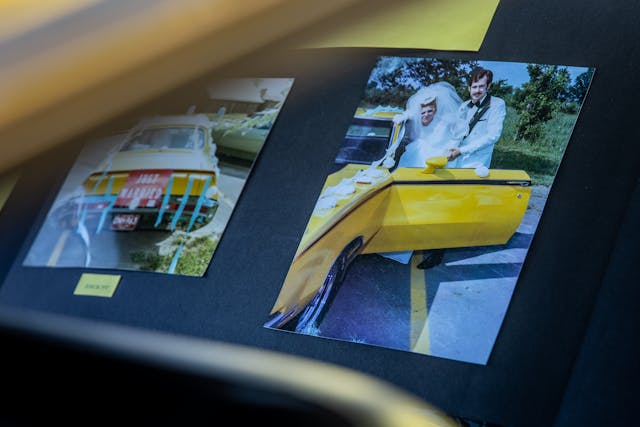
These are GM veterans, engineers from a golden age of performance, but in most ways they’re just like everyone else at GS Nationals this year. They’re car people, Buick fanatics—and getting together to talk about the good ol’ days in the company of amazing cars is as good as any sunny spring day can get.
“Fifty years ago, I never would have believed that this would all continue,” reflects Manner, surveying the festival of Buick history we’re all enjoying. “I never could have imagined it.”


